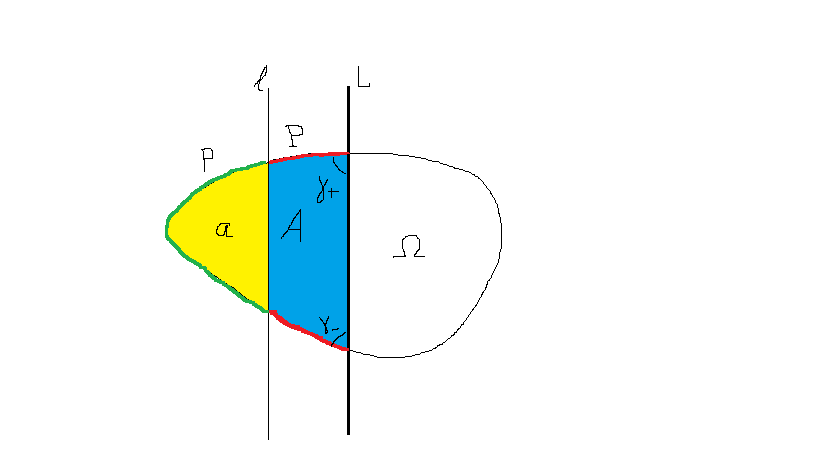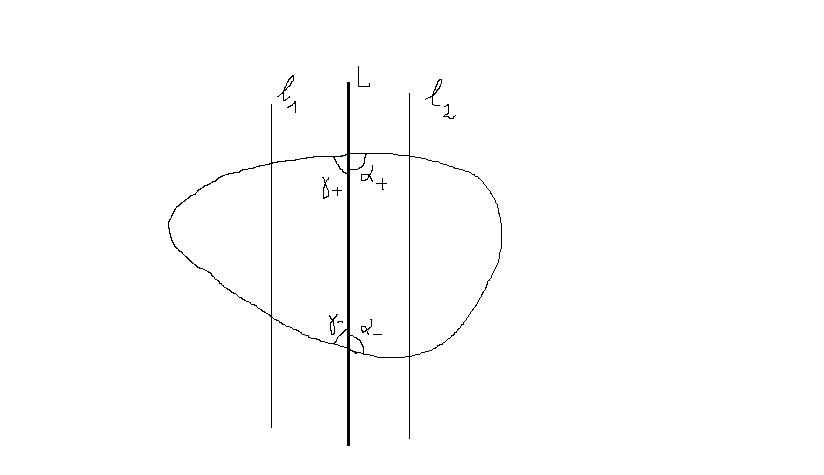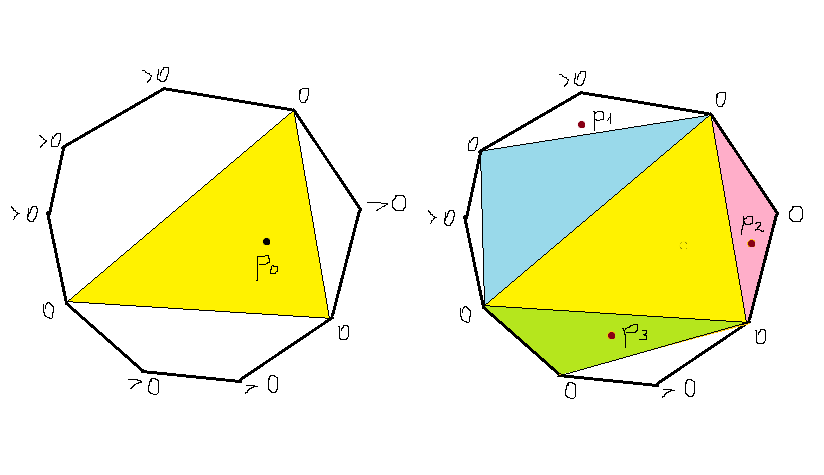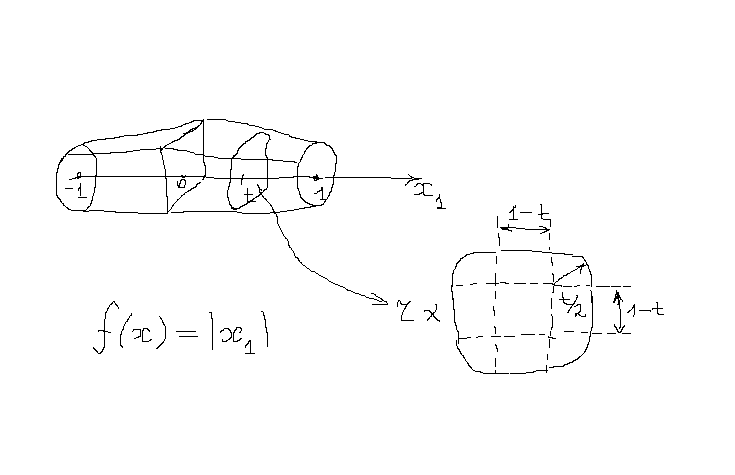ToThe next thing we'll need is the following lemma from plane geometry, which is essentially Lemma 2 in https://arxiv.org/abs/2305.15646.
Let $\Omega$ be continued a convex body and let $\ell$, $L$ be two parallel (say, vertical) lines intersecting $\Omega$ with $\ell$ lying to the left of $L$ (see the figure).
Let $a$ and $A$ be the parts of the area of $\Omega$ on the left of $\ell$ and $L$ respectively (so $a$ is yellow and $A$ is yellow and blue together) and let $p$ and $P$ be the corresponding parts of the perimeter (green and green and red together). If the sum $\gamma_++\gamma_-$ of the angles between the boundary of $\Omega$ and $L$ on the side of $\ell$ is not greater than $\pi$, then $$ \frac aA<\frac pP\,. $$ Note that in Lemma 2 in the paper we claimed just the non-strict inequality, which was sufficient for our purposes there, but one can see that several $\le$ near the end of the proof are actually $<$ unless the lines coincide or $\ell$ just touches $\Omega$ instead of honestly cutting it.
This lemma has a curious corollary. Let $\ell(t)$ be the vertical (parallel to the $y$-axis) line $\{(x,y): x=t\}$. Let $p(t)$ and $a(t)$ be the parts of the perimeter and the area of $\Omega$ on the left of $\ell(t)$ respectively. Let $P$ and $A$ be the full perimeter and area of $\Omega$. Then there exists $t_0$ such that the difference $$ D(t)=\frac{p(t)}{P}-\frac{a(t)}A $$ stays non-negative for $t\le t_0$ and non-positive for $t\ge t_0$.
Indeed, it is interesting to consider only $t$ for which $\ell=\ell(t)$ cuts $\Omega$. It is easy to see that $D$ is positive when $\ell$ is almost all the way to the left and negative when $\ell$ is almost all the way to the right, so if there is a change of sign somewhere and if there is more than one, there should be at least three, i.e., there should exist three positions $\ell_1,L,\ell_2$ of the line $\ell$ for which $D=0$ (see the figure)
But then either $\alpha_++\alpha_-\le\pi$ or $\gamma_++\gamma_-\le\pi$. Suppose that it is the sum of $\gamma$'s (the other case is similar, just reflect the picture around the vertical axis). Then, if $\ell_1=\ell(t)$ and $L=\ell(T)$, we have $$ \frac{p(t)}P=\frac{a(t)}A\text{ and }\frac{p(T)}P=\frac{a(T)}A\,, $$ so $$ \frac{p(t)}{p(T)}=\frac{a(t)}{a(T)} $$ but that contradicts the conclusion $$ \frac{p(t)}{p(T)}>\frac{a(t)}{a(T)} $$ of the Lemma!
Now we are almost done. Let us assume WLOG that the line $A=0$ is vertical (otherwise just rotate the coordinate system). Let $L=\ell(t_0)$. Let $\ell$ be the line $\{A=0\}$. Let's say $\ell$ lies on the left of $L$. Then we will choose between $A$ and $-A$ so that $A$ is positive to the left of $\ell$. Note that then $\max(A,0)$ is in the cone generated by the Heaviside functions $H_t(x,y)=\begin{cases}1, & x<t\\0, & x\ge t\end{cases}$ with $t\le t_0$. However for such a Heaviside function, we have $$ \frac{1}{|\partial\Omega|}\int_{\partial\Omega}H_t= \frac{p(t)}{P}\ge \frac{a(t)}{A}=\frac{1}{|\Omega|}\int_{\Omega}H_t\,. $$
The End!




